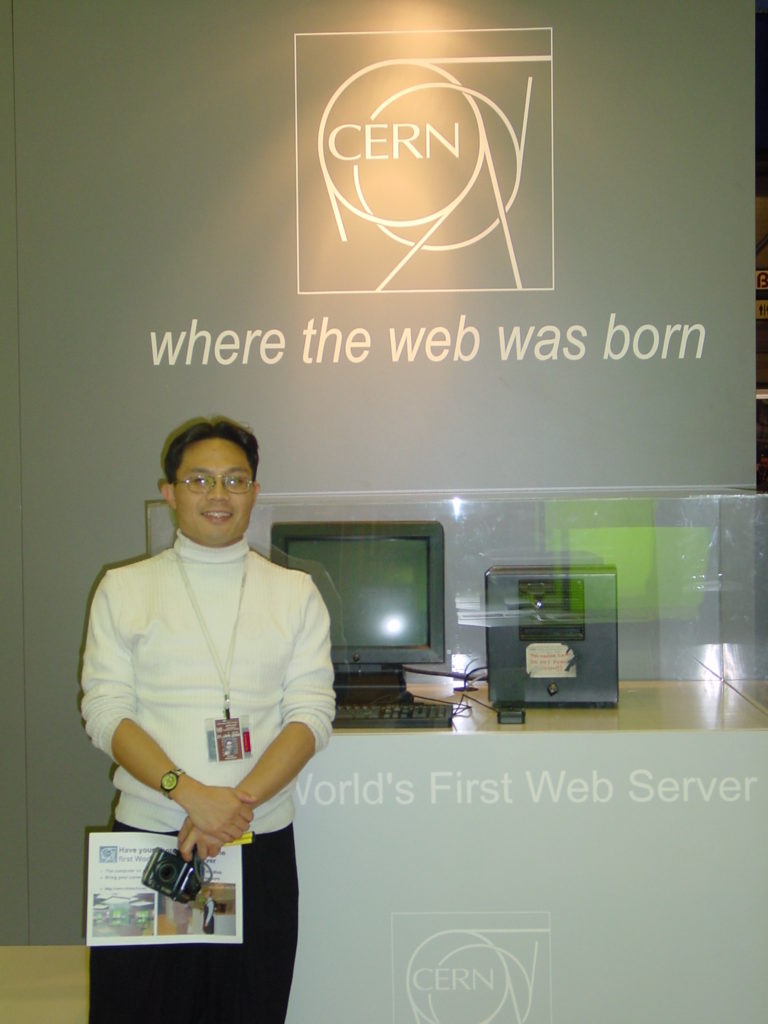On March 11, 1989, Sir Tim Berners-Lee, a computer programmer working at the CERN lab in Geneva, sent to his boss Mike Sendall a proposal for a “world information management system.” He called it the “worldwideweb.” His boss famously called it “‘Vague, but exciting.”
Sir Berners-Lee developed much of the backbone of the internet — URL, HTTP and HTML. And amazingly, he gave his ideas away for free, hoping that it would help spur scientific collaboration and bring people together. Such an inspiring story and a great human.
I was certainly inspired by him. Here’s me in 2003, so excited to be next to Sir Berners-Lee NEXT computer, on which he developed the system that would become the world wide web we know today.

On the 30th anniversary of the birth of the web, Sir Berners-Lee issued this statement on what he sees as the future of the internet. He calls for governments, companies and citizens to work together to fight against some of the great dangers that have arisen along with these technologies:
- Deliberate, malicious intent, such as state-sponsored hacking and attacks, criminal behaviour, and online harassment.
- System design that creates perverse incentives where user value is sacrificed, such as ad-based revenue models that commercially reward clickbait and the viral spread of misinformation.
- Unintended negative consequences of benevolent design, such as the outraged and polarised tone and quality of online discourse.
That’s a tall order. But one that I’m working on in my own small way in my current role as Online Learning Manager for KQED Teach. We are developing a series of courses that will help teachers prepare students to deal with misinformation and disinformation in the age of social media. I think that Tim would approve.

